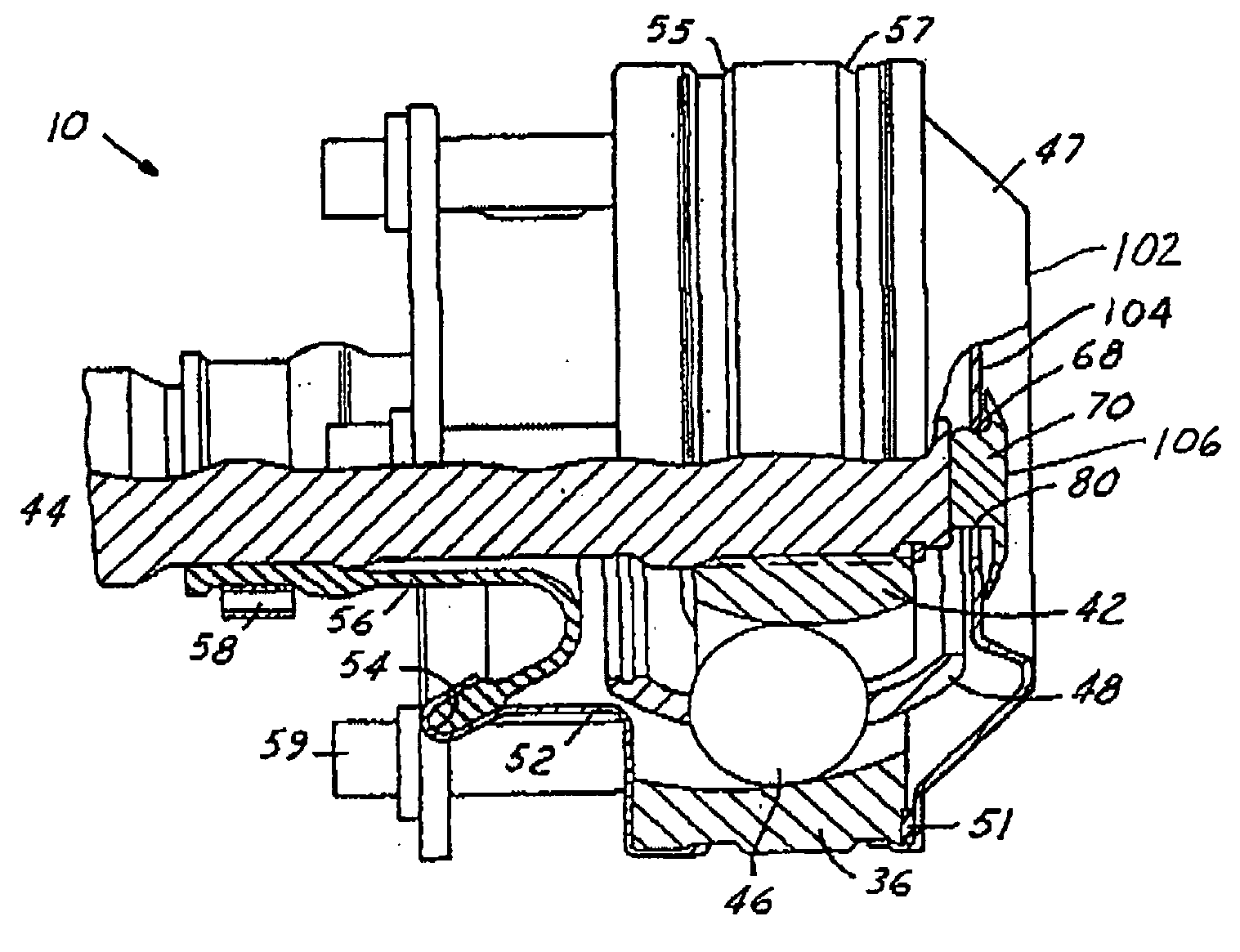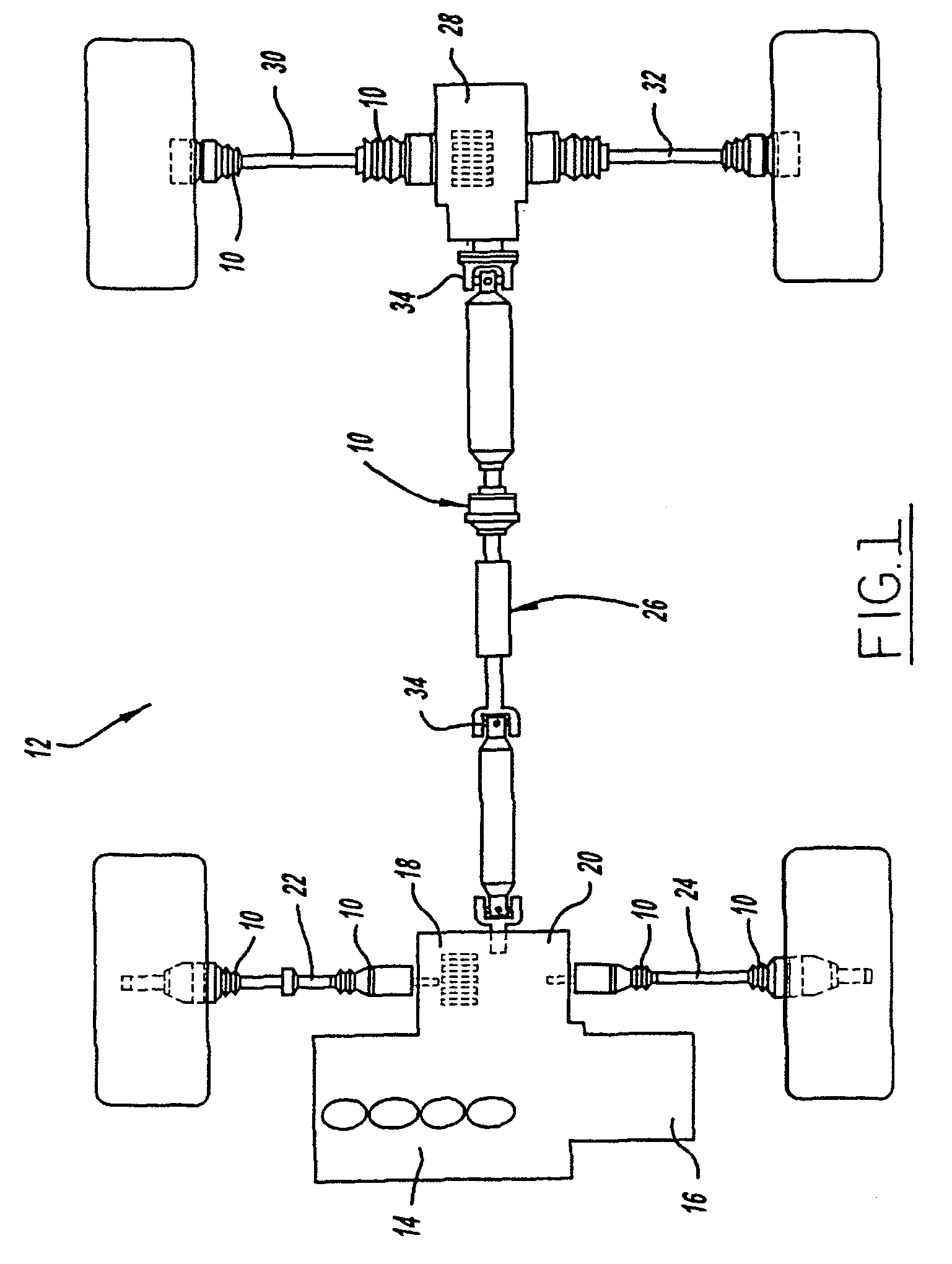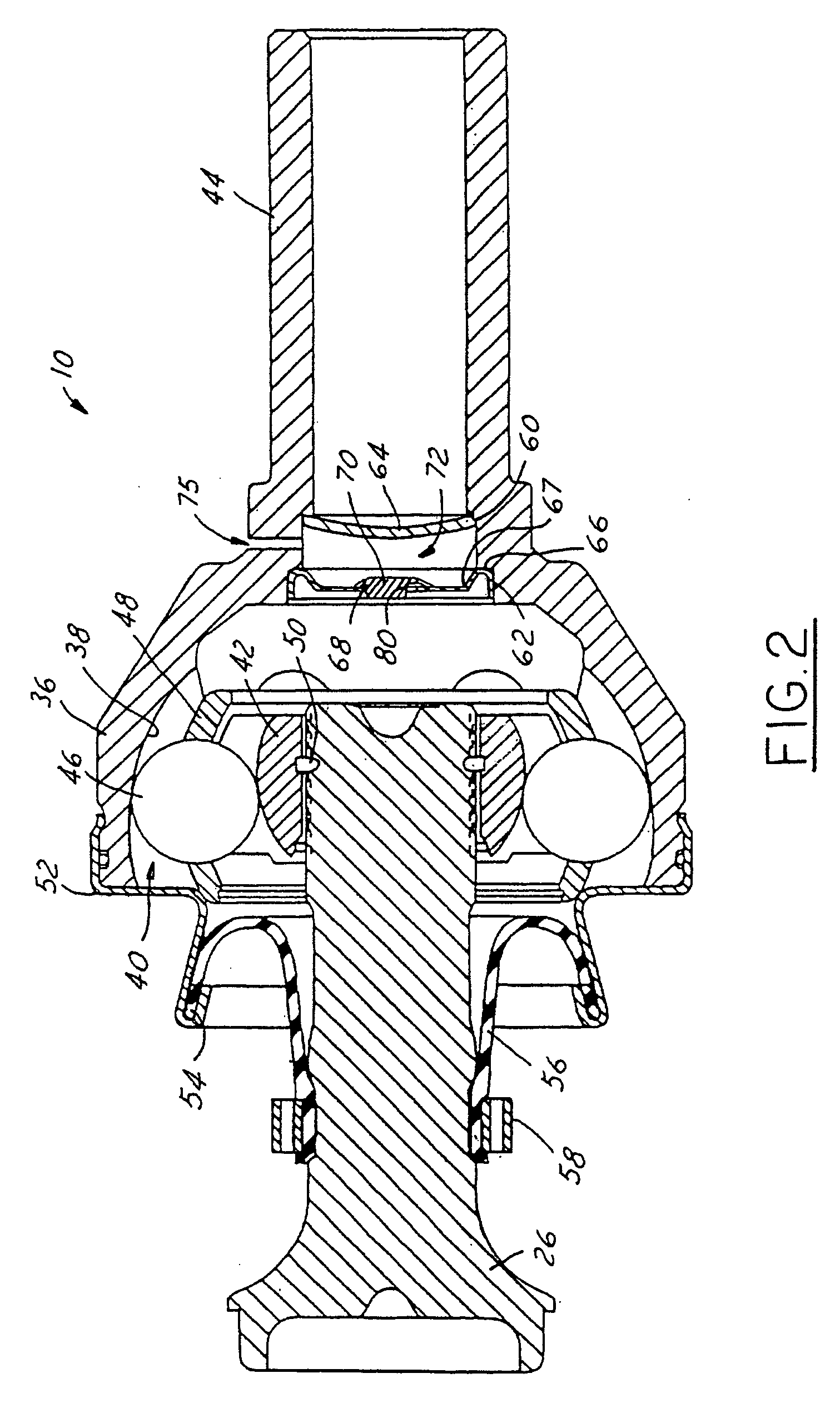Constant velocity joint vent valve
a constant velocity joint and vent valve technology, applied in the direction of functional valve types, couplings, engine diaphragms, etc., can solve the problems of internal damage and destruction of the joint, loss of sealing ability, and the blockage of the vent hole by lubricating grease, so as to prevent the escape of grease
- Summary
- Abstract
- Description
- Claims
- Application Information
AI Technical Summary
Benefits of technology
Problems solved by technology
Method used
Image
Examples
Embodiment Construction
[0018] Referring to the drawings, a constant velocity joint 10 including a vent valve according to the present invention is shown. It should be noted that any type of constant velocity joint such as a plunging tripod, a fixed tripod, etc. having any style such as a monoblock, a disk, a Rzeppa, etc. may be used in combination with to the present vent valve. The vent valve of the present invention provides a novel and improved method of venting the joint to prevent grease from plugging the vent valve, and allows pressurizing the internal constant velocity joint chamber to bring it into pressure equilibrium with the external environment.
[0019]FIG. 1 shows a plan view of an all wheel drive vehicle drive line wherein the present vent valve may be used to advantage. The drive line 12 shown in FIG. 1 is a typical all wheel drive vehicle driveline. However it should be noted that other vehicle drivelines employing vented constant velocity joints can also be improved with the present vent v...
PUM
 Login to View More
Login to View More Abstract
Description
Claims
Application Information
 Login to View More
Login to View More - R&D
- Intellectual Property
- Life Sciences
- Materials
- Tech Scout
- Unparalleled Data Quality
- Higher Quality Content
- 60% Fewer Hallucinations
Browse by: Latest US Patents, China's latest patents, Technical Efficacy Thesaurus, Application Domain, Technology Topic, Popular Technical Reports.
© 2025 PatSnap. All rights reserved.Legal|Privacy policy|Modern Slavery Act Transparency Statement|Sitemap|About US| Contact US: help@patsnap.com



